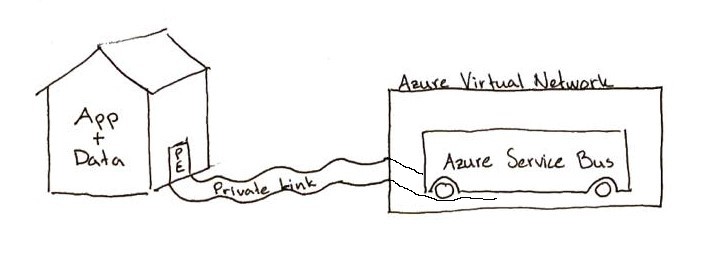The grass is always greener on my side of the .NET
Why Azure is the best thing since sliced bread
Dear CTO
It has come to my knowledge you are the head of taking our department into the future. I have also come to understand you are highly reluctant to make use of all the possibilities with the cloud.
Please allow me a few minutes of your time and I will do my best to paint you a clear picture of how I think we can make the most of our business!
Today
At the moment our application runs on (to be honest) old hardware with outdated software in the basement. And due to the security restrictions regarding some of the data it’s difficult to have an effective way of working. I know it’s usually a bad idea to fix something that isn’t broken, but what will happen when things actually starts to break down? Or if we want to expand our business abroad? Or if our office suffers from a power out? To modernize both hardware and software as well as keeping a high level of redundancy in a safe way will cost a lot of money. Even if we do not take the full step over to the cloud in this round, I have a suggestion that when we do, will cost our business less money upfront, be instantly scalable, completely redundant and just as safe as keeping our servers in house.
The future
Let me introduce you to Azure. They provide all the service we would need to stay updated, be able to quickly expand both in terms of customer base and geographically and keep our redundancy level high but still maintain full security regarding our protected data in the future. For now, since our business is not ready to take the big step just yet, I have a smaller change to begin with. As we have agreed, an enterprise bus is the way to go for us, I would like to suggest Azure’s service Azure Service Bus for this. My simple drawing below illustrates how we, in a completely safe way, can communicate with our Service Bus without exposing any restricted data.

Since you are one of my most dedicated followers I know you have read my very first post in this blog about the Cloud - what kinds of clouds there are and what services to be found in them. Therefore I’m sure you are familiar with both private clouds and PaaS (which I will mention further on).
My suggestion is that we, for now, keep both our application and our restricted data as is in our private cloud and use the Service Bus remote. Since the Service Bus handles pretty small amounts of data, and we can choose storage location for it ourselves, the distanse will not be an issue. There are three pillars in this solution: Azure Virtual Network (VNet), Private Link and Private Endpoint (PE in my drawing). Let me explain in short:
- VNet is almost the same as our own private network - but online. The big bonuses with VNet is that it’s scalable, has a high availability and is isolated. You can choose who has access to what. VNet also gives us the option to use more of Azure’s PaaS services.
- Private Link is the link that makes it possible to securely access the Service Bus over the private endpoint. Data travels over Microsoft network, and our service will never be available to or visible on public internet.
- Private Endpoint is the private interface (kind of the door with a big lock on it) to the service using Private Link for access.
Even further into the future
A Virtual Private Cloud (VPC) is a private cloud put into a public cloud, but with limited access. We will maintain the control and management of security, but we will be able to use PaaS and all its benefits. With a VPC we could put both our application and our data in the cloud which would give us a lot less vulnerable application in terms of up-time and level of redundancy. A solution like this would also significantly lower our hardware costs.
I hope that I with this small presentation have made you curious enough to consider this alternative!
Further information
